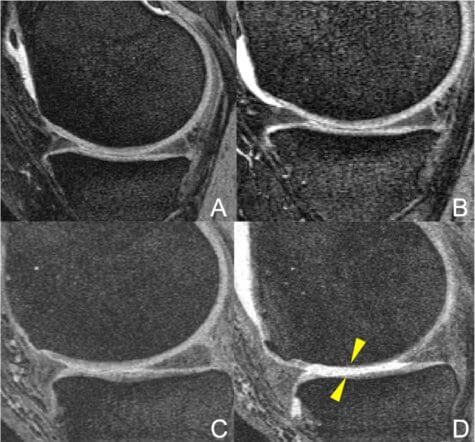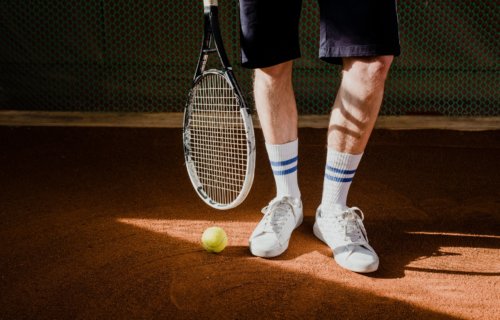OAK BROOK, Ill. — At any age, staying physically active is always a good plan to improve your health. What you do during that exercise however, may not be the best way to stay in shape. A study released by the Radiological Society of North America finds racket sports, like tennis and racquetball, are among the worst physical activities for your knees.
This findings are particularly true for overweight individuals. Researchers reveal these sports accelerate knee joint degeneration more than most other forms of exercise.
Knee joint osteoarthritis is the progressive wearing down of the body’s protective cartilage. When a person loses this cushion on the ends of the bones, it can cause severe pain and even disability. Osteoarthritis affects nearly 14 million people in the United States alone. Too much body weight can increase the risk of developing the condition.
How you exercise can determine how healthy your knees stay
Researchers explain that staying active has several benefits for overweight people, but the wrong kind of movements can damage the knee even worse than carrying a little extra weight. The study examined the rate of joint degeneration in 415 overweight or obese patients with an average age of 59. Until now, researchers say few studies have used MRI scans to follow the structural changes in the knee in overweight individuals.
For more than four years, each participant kept regular logs of their time spent doing six different types of exercises. Those included ball sports, bicycling, jogging and running, elliptical workouts, racket sports, and swimming. The team gave each person a baseline MRI at the start of the study and then measured their changes over the years using the modified Whole-Organ Magnetic Resonance Imaging Score (WORMS). This score goes up when MRI readings reveal more degeneration in the knee.

(Credit:
Radiological Society of North America)
The results reveal patients taking part in racket sports have significantly higher WORMS scores than anyone else. Specifically, racket sports cause much more degeneration than using an elliptical trainer, which caused the smallest amount of change in knees over four years. Participating in tennis or racquetball even produced a significantly higher degeneration score than people running or jogging.
Study authors find racket sports cause greater deterioration in the medial tibial cartilage compartment. This is the area on the inside of the knee where arthritis typically sets in first.
“In our study, progression of overall knee joint degeneration was consistently higher in overweight and/or obese patients engaging in racket sports,” says lead study author Silvia Schirò in a media release.
“We also found that workouts using an elliptical trainer were associated with reduced progression of overall knee joint and cartilage defects. Moreover, our findings showed that when comparing different low impact activities with each other, such as bicycling, elliptical trainer and swimming, the elliptical trainer was associated with the lowest increase in WORMS sub-scores over 48 months.”
Why do racket sport damage the knee so badly?
Researchers suspect the main reason for this rapid decline is the number of high-speed lateral movements in these sports. These quick, side-to-side bursts of action can negatively impact the femoral-tibia compartment. This structure in the knee contains the femur condyle, the rounded end of the thighbone which helps it slide over the shinbone, and the meniscus. The meniscus is the rubbery, C-shaped piece of cartilage in between those two bones.
“A large lateral force imparted at the foot during side-to-side movements may be driving large knee adduction moments, a key feature in medial compartment disease, which imparts high compressive loads on the medial tibia and femoral condyle,” Schirò explains. “In support of this premise, the racket sports group showed elevated cartilage degeneration in the medial tibia.”
In overweight or obese patients, the team believes that excess weight can also impair normal joint mechanics in the body. Overloading these joints can increase the stress on the meniscus and jeopardize the knee’s protective cushion.
“High impact physical activity with elevated load and high shear forces may trigger and accelerate this process,” Dr. Schirò adds. “Moreover, participants who played racket sports showed significantly more meniscal degeneration when compared to the remainder of the study group.”
For people who don’t want to give up their racket, the study notes there are alternatives to these high-stress sports. The study recommends overweight players switch to less fast-paced racket games like badminton or doubles tennis to lessen the load on their knees.
The study is being presented at the annual meeting of the Radiological Society of North America (RSNA).
